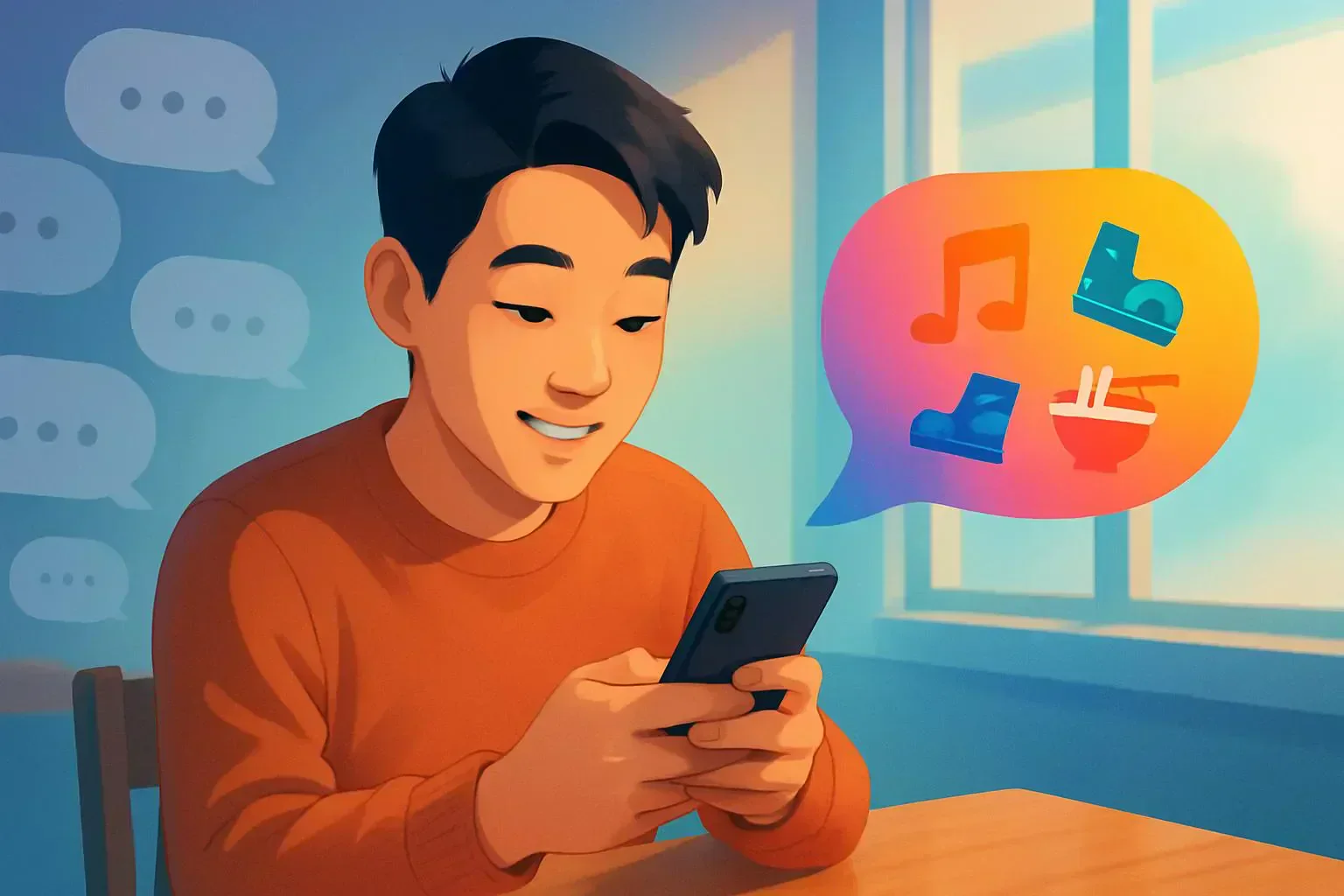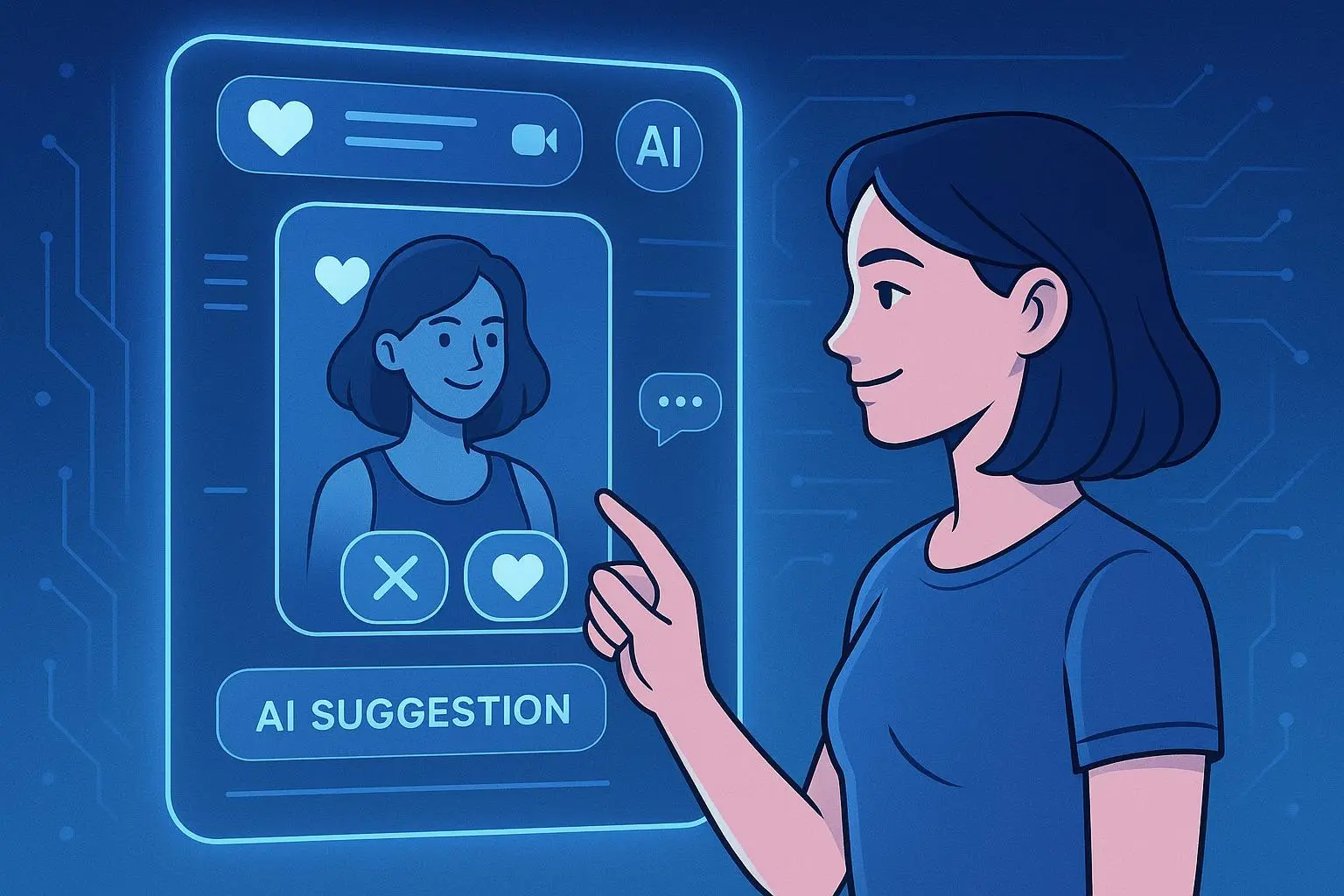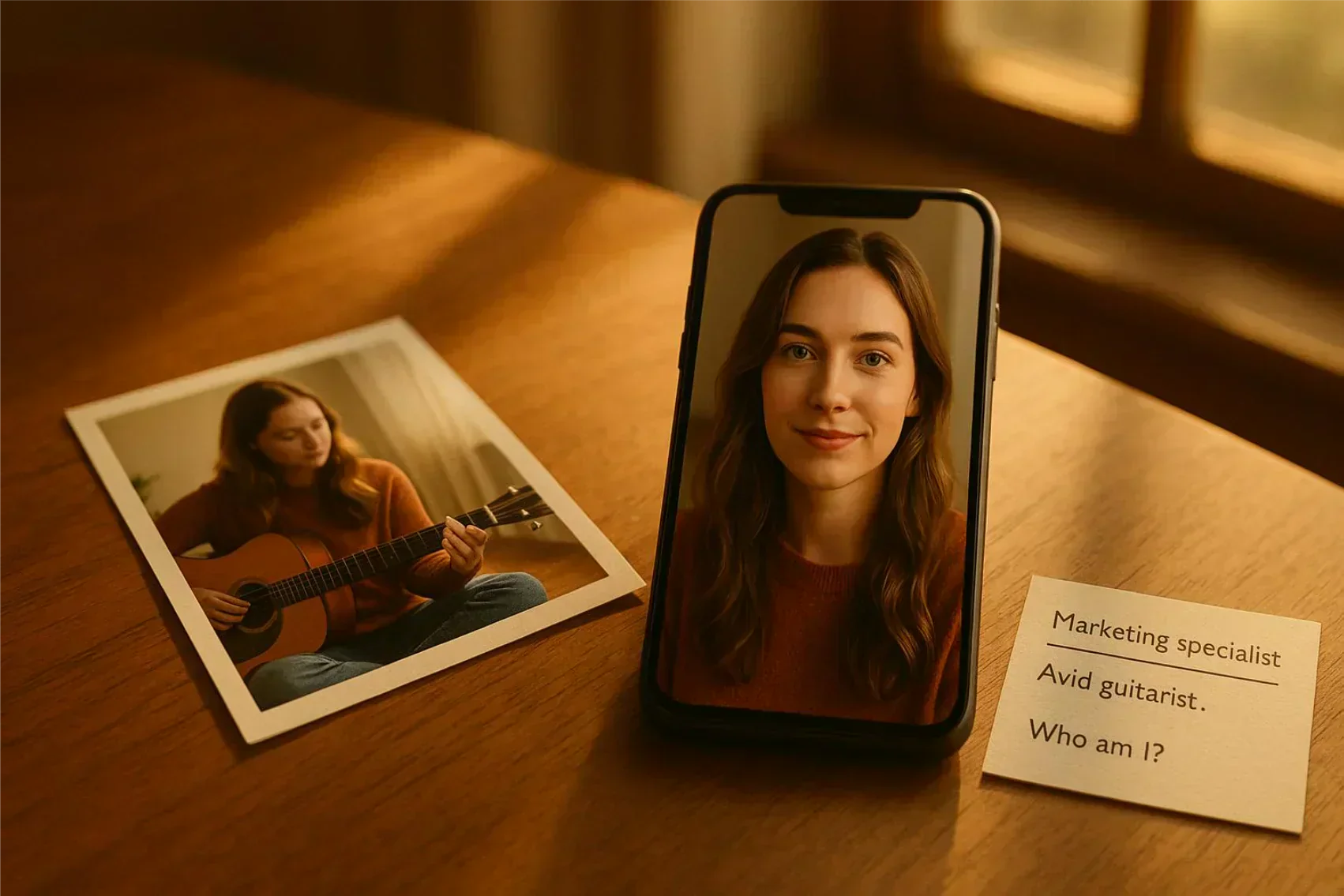
What to Say on a First Date: Questions That Spark
Published on 4/11/2025 • 6 min read
The drinks are ordered, the small talk about the weather is over... and then, the dreaded silence. What do you say next?
I know that moment well. Years ago, I was trying online dating in a new city and a first date started with a joke about my coffee order. It stalled into awkward silence after I asked the wrong follow‑up. I walked away feeling like I’d missed a real connection. Over the next six months, I tested a handful of prompts and follow‑ups across a dozen dates. I reduced awkward pauses from several per date to one or none and even scored three second dates out of eight first dates. That small experiment taught me that a few thoughtful questions, genuine curiosity, and balanced self‑sharing can flip a tense night into a lively conversation.
This guide is for anyone who wants to show up calm, curious, and interesting — whether you’re nervous, new to dating, or tired of stale conversation loops. Below you’ll find light icebreakers, curiosity-driven prompts, travel and work‑friendly questions, playful quips to spark laughter, and deeper queries for when the vibe feels right. I’ll also share small habits and mindset shifts that help conversations flow naturally, plus how to rescue things when they stall.
How to use these prompts (so they don't feel rehearsed)
Treat prompts like spices: a little goes a long way. Three simple rules:
- Lead with genuine curiosity, not interrogation. Your tone should invite, not interrogate.
- Follow up. A single prompt is the seed; follow‑ups grow the conversation.
- Share a short, relevant piece of yourself after they answer to keep things balanced.
Light icebreakers and quick prompts
Start here when energy is cautious. These are low‑pressure prompts that often spark an anecdote:
- “What’s the story behind your profile picture?” (People love quick origin stories — they reveal humor and social circles.) [1]
- “Highlight of your week so far?” (Recent positives open doors into routines and values.) [2]
- “Morning person or night owl?” (Lifestyle hint that often leads to funny confessions.) [3]
Hobbies, passions, and how they spend time
Ask what gets them excited — this is where chemistry often hides. Instead of rapid‑fire questions, follow one thread:
- “What do you do to unwind after a long week?” Then follow with: “Tell me a specific recent example.”
- “Is there a hobby you've always wanted to try?” and imagine a hypothetical weekend doing it together.
Travel and adventure
Travel prompts reveal curiosity and comfort zones without needing long lists. Try:
- “Best trip you’ve taken — what made it stand out?” (Listen for sensory details: food, a sunset, a person.) [2]
- “If you could live anywhere for a year, where and why?” (Shows priorities like culture, food, or nature.)
Work and purpose (without snooze‑level detail)
Titles are thin — dig for meaning. Ask:
- “What’s the most rewarding part of your job?” Then ask, “How did you realize that mattered to you?”
- “If you weren’t in your current role, what would you be doing?” (Hypotheticals reveal long‑term interests.)
Pop culture and shared tastes
Media questions are quick connectors. Use them to swap small stories rather than lists:
- “Last show you binged?” followed by, “What scene stuck with you?”
- “Best concert you’ve been to?” — people love recounting live moments.
Deeper get‑to‑know‑you prompts (when the vibe is right)
Move here only if the energy is warm. These build emotional rapport:
- “Something you’re really proud of?” (Listen for values and effort.)
- “Who has had a big impact on your life?” (Leads to family or mentor stories.)
Funny and quirky sparks
A little silliness relaxes people and makes dates memorable:
- “Most useless talent you have?”
- “If animals could talk, which would be the rudest?” (Leads to playful debate and laughter.)
A few small habits that transform conversations
- Be an active listener: nod, paraphrase, and ask short follow‑ups. Slowing down reveals nuance.
- Ask open‑ended prompts that invite stories instead of yes/no answers.
- Share without hogging: short, relevant anecdotes build connection without monologues.
- Embrace calm pauses — a quiet moment can reset the rhythm.
- Mirror energy and tone: match enthusiasm or slow down to meet their pace.
What to avoid early on
Avoid common conversational landmines unless both of you steer there naturally: past relationships, intense political or religious debates, salary specifics, or relentless complaining. If a sensitive topic appears, name the feeling and suggest a boundary: “That sounds intense — I’m curious, but maybe it’s better for another time?”
How to recover when conversation stalls
Try one of these quick resets:
- Reintroduce a light topic: “Random — what’s your comfort food?”
- Use the environment: comment on the music or artwork and riff off that.
- Play a micro‑game: “Two truths and a lie” or “Describe your week in three emojis.”
- Offer a sincere, specific compliment followed by a question: “I love how you tell stories — what else are you into?”
Two short example dialogues (showing how to escalate)
Example A — From light banter to something deeper:
- You: “So, morning person or night owl?”
- Them: “Night owl, definitely.”
- You: “Same. What’s your favorite late‑night ritual?”
- Them: “Cooking after midnight — it helps me decompress.”
- You (follow‑up): “That sounds cozy. What’s your go‑to dish when you’re winding down?”
- Them: “A spicy ramen I learned from a friend in grad school.”
- You (deeper): “That trip must have been meaningful — what drew you to study there?”
Example B — Turning a travel anecdote into values:
- You: “Best trip you’ve taken?”
- Them: “A two‑week road trip across Portugal.”
- You: “What made it stand out?”
- Them: “We stumbled on a family‑run restaurant; the owner sang to us.”
- You (follow‑up): “I love that — small, unexpected moments stick. Do you seek trips like that on purpose or was it a happy accident?”
Ending the date with class
If you want another outing, be specific: “I had a great time. Want to check out [specific plan] next week?” If you’re not feeling it, be gracious: “Thanks for tonight — it was nice meeting you.” Kindness matters; you don’t owe a critique of chemistry.
Quick‑play mini‑playbook: a 10‑minute date script
Use this short script to structure a first meetup without sounding rehearsed:
- Minute 0–2: Warm opener — a light observation about the venue or a profile photo.
- Minute 2–5: Two light prompts (e.g., profile picture story + highlight of the week). Follow one thread.
- Minute 5–8: One curiosity question about hobbies or travel; ask a specific follow‑up.
- Minute 8–10: Share a short, related anecdote and suggest a natural next step (a second‑date idea or follow‑up text topic).
This rhythm keeps things moving and leaves room for detours.
FAQ
Q: How do I avoid sounding rehearsed? A: Use one or two prompts, listen, follow up naturally, and always add a short, relevant personal note.
Q: What if they ask something I don’t want to answer? A: Gently deflect with curiosity: “That’s a big one — I’m not ready to dive into that tonight. What’s your favorite local coffee spot?”
Q: How do I tell if it's time to go deeper? A: Look for emotional language, sustained eye contact, or longer answers. If their responses include feelings and specifics, it’s safe to move deeper.
Optional resource (single, subtle mention)
If you want a practical tool to map progression from small talk to meaningful topics, consider Rizzman's Conversation Escalation Mapper — it’s a single resource to practice pacing and follow‑ups.
Final thoughts
The goal of a first date is simple: meet someone new and see if there’s a spark. Questions help, but curiosity, presence, and balanced sharing are the real engines of connection. Walk in prepared instead of rehearsed, stay open, and remember: you’re exploring people, not auditioning for perfection. Some dates will fizz, some will surprise you, and some will give you a great story — and that’s the point.
References
Footnotes
-
DeCarlo, T. E. (2005). The effects of sales message and suspicion of ulterior motives on salesperson evaluation. Journal of Consumer Psychology, 15(3), 238-249. ↩
-
Ellison, N. B., Heino, R., & Gibbs, J. L. (2006). Managing impressions online: Self-presentation processes in the online dating environment. Journal of Computer-Mediated Communication, 11(2), 415-441. ↩ ↩2
-
Toma, C. L., Hancock, J. T., & Ellison, N. B. (2008). Separating fact from fiction: An examination of deceptive self-presentation in online dating profiles. Personality and Social Psychology Bulletin, 34(8), 1023-1036. ↩
Ready to Optimize Your Dating Profile?
Get the complete step-by-step guide with proven strategies, photo selection tips, and real examples that work.


